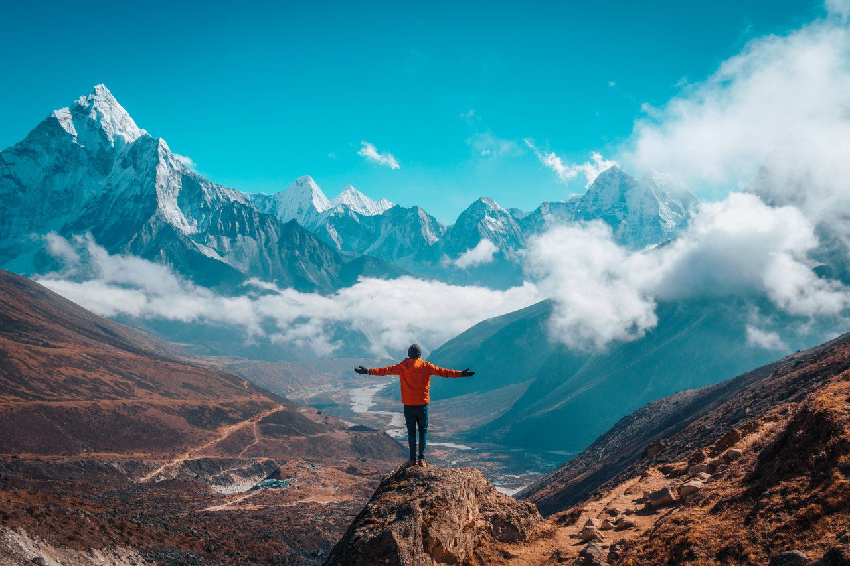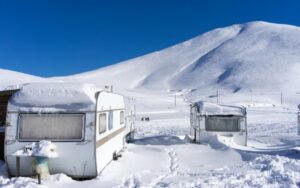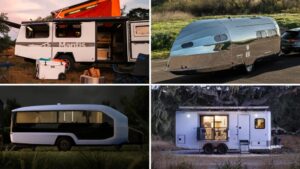The ultimate guide to Everest base camp trek
If you are planning a trip to Nepal and a trek to Everest Base Camp, also known as EBC, we are going to give you all the information that you will need to have beforehand, as well as a series of tips based on experience. in the first person and everything, you need to know for the preparation of the trip and the trekking.
What if I want to do the Everest trek with a reliable agency?
If you are not sure about going on your own, I recommend the Naturtrek agency, which specialized in trekking. They are from Navarra and have more than 20 years of experience. It is very important not to go with just anyone because this route can be dangerous, so you have to have someone who knows how to respond to a problem and who has a consolidated track record. In addition, they have professional guides and a very good logistics team. You can contact them to see the trekking options and request a quote by clicking here or on the image.
What is the best time of year to do Everest Base Camp?

It really can be done all year round, but each season has its advantages and disadvantages.
Winter
Undoubtedly the main problem is the cold, the temperatures as we ascend go down whatever the time of year, but in winter they are logically always lower and can even reach -25 or -30 once we exceed 5000 meters. These temperatures also cause problems such as the weight of the material that we transport for shelter or the water that we carry to hydrate our freezes. Another problem is that the days are very short and you have to adjust the days to the maximum.
The main advantage is that during the winter the route is very little traveled and you can enjoy purer and more authentic trekking, without accumulations of people or problems with accommodation.
Spring
The star season without a doubt, milder temperatures, there is usually rainfall during the afternoon and the first hours of the night but they are not usually very copious. It is very striking to experience that every day, absolutely every day, the weather follows the same guidelines. Around 11 in the morning clouds begin to enter the valley and around 1 pm, everything is covered until approximately 2 in the morning when it clears up until 11 the next day.
It allows you to plan the days very well, taking those hours of good weather and taking advantage of them. The days are longer than in winter and if you get up a little early you can do 8-9 hour shifts without any problems. A negative point is the influence of people doing trekking. A policeman from one of the towns that sealed the passage told us that during the month of April 36,000 people had passed through that town on their way to the base camp, on the one hand, it is appreciated but on the other, it takes away a bit of charm.
Summer
Perhaps the most problematic season for trekking since it is the monsoon season and rainfall is daily and very abundant. It is very cumbersome when it rains and you have to be walking with the raincoat or Goretex for hours if we have this every day and at all hours it becomes a problem. Also, keep in mind that rain at 3,000 meters is snow at 4,500 meters. As in winter, the advantage is that there will not be many people doing the trekking.
Autumn
Along with spring, it is the other strong season for visits to trekking. It is perhaps a somewhat drier season than spring and is the one chosen by many mountaineers to climb the main peaks of the country for the same reason. There is also a large influx of tourists but perhaps less than during the spring.
Tips for before and during the Everest Base Camp trek
- Do not have the Kathmandu-Lukla flight purchased in advance if you are going on your own. This flight can be purchased there both in the place where you are staying and in many agencies in the center of Kathmandu, as well as online there. Every day there are around 20 flights that make that trip. In addition, weather conditions are key, if it is bad in Lukla or Kathmandu, flights are canceled. We lost a day for this. That’s why it’s better to get there, check the weather forecast, and buy the ticket accordingly. If you go with an agency they will take care of these procedures and that you fly when it is possible to do so.
- When you arrive at the Kathmandu airport to catch the flight to Lukla, be careful, you have to be alive. There are agency managers who will try to sneak in, get in the way, since they know the managers of the airlines and if the weather is bad and few flights are leaving they will try to get their clients to leave, we had an experience of this type and if we had not been alive they would have sneaked in.
- In trekking there are several security measures aimed at combating altitude sickness that must be followed and that are BASIC so as not to have to go back or have to be evacuated:
- The first is to drink a LOT of WATER, we are talking about 4-5 liters. People there tell you to stop drinking water around 6 in the afternoon so you don’t spend all night getting up to go to the bathroom, but the 4-5 liters must be UNNEGOTIABLE, without water altitude sickness is guaranteed.
- At night you have to rest, try to sleep as much as possible, although as you gain altitude, the nights will be more complicated due to the lack of oxygen, you have to rest if you don’t rest at that altitude, your blood pressure rises and headaches and the first symptoms appear. of altitude sickness.
- Walking slowly during the day’s route, stopping to have a coffee from time to time, talking to people, taking photos, and moving the slower the better, will make us acclimatize more progressively and better.
- Respect the days of acclimatization, there are at least 2 during the trek and they are essential to get a good disposition to continue climbing. The first is usually done at 3,200 meters and the second at about 4,000. However, any extra day you acclimatize and stay in another town is never too much.
- Another measure to acclimatize well (we did not comply with this) is when the stage ends, ascend a little more, about 100 meters of unevenness, and go back down to sleep in the town where it was planned.
- Know the symptoms of altitude sickness, headaches, lack of appetite, tachycardia, hallucinations or disorientation, ear pain, nausea, vomiting, cerebral edema, pulmonary edema, death. I am not a doctor but these steps were written for me by a Sherpa that we met in Lukla and he told us that if any of us vomited, the evacuation should be immediate, that with strong nausea we have to go down if we can by our own feet and that even nausea can continue and try to save the situation with some aspirin or acclimatizing one day in the place where the symptoms appear. As you can see, they are not a joke and you have to be very careful.
- Do not ascend more than 600 meters of altitude difference per day, this rule is also basic, if we ascend more, even if at first it does not seem serious or there are no symptoms, at night they will appear and it will be quite unpleasant.
If these points are taken care of and the physical form is at least acceptable, there should not be any problem with the height, which, after all, is the greatest danger of the route.
You may also be interested in How to Find Time and Money to Travel While You’re in College




